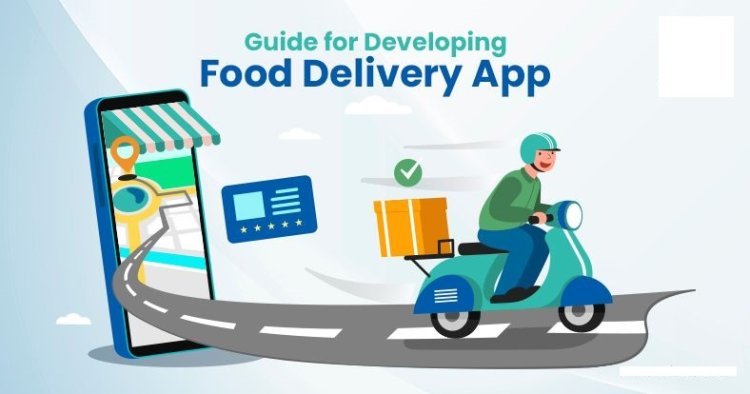Conquering Cravings: A Guide to Food Delivery App Development in 2024
The food delivery app market is a booming industry, fueled by our increasingly busy lifestyles and a desire for convenient culinary experiences.

The food delivery app market is a booming industry, fueled by our increasingly busy lifestyles and a desire for convenient culinary experiences. With established giants like DoorDash and Uber Eats dominating the landscape, aspiring entrepreneurs might wonder – is there still room for new players? The answer is a resounding yes, but success hinges on a well-developed strategy and a clear understanding of the current food delivery app development landscape. This guide delves into essential considerations, from market trends to must-have features, to equip you for this exciting realm.
Understanding the Current Food Delivery Landscape:
Market saturation might seem daunting, but it also presents an opportunity to differentiate your app. In 2024, several key trends are shaping the future of food delivery apps, offering inspiration for those looking to create app like Zomato and carve out their niche in the competitive landscape:
- The Rise of Hyperlocal Delivery: Customers are craving experiences that cater to their immediate needs. Hyperlocal apps focus on a defined geographical area, partnering with smaller, independent restaurants that may not be on large platforms. This offers faster deliveries, supports local businesses, and caters to unique neighborhood tastes.
- AI-Powered Personalization: Advanced algorithms can personalize the user experience by suggesting dishes based on past orders, location, dietary preferences, and even weather conditions. This fosters user loyalty and increases order frequency.
- Sustainability Initiatives: Eco-conscious consumers are demanding environmentally friendly practices. Look at incorporating features like reusable packaging options, carbon footprint estimates, and partnerships with eco-friendly restaurants.
- Drone Deliveries: While still in its nascent stages, drone delivery holds promise for faster delivery times in specific areas, especially for short-distance, high-demand orders.
Must-Have Features for a Successful App:
A well-designed food delivery app caters to three distinct user groups: customers, restaurants, and delivery drivers. Here's a breakdown of essential features for each:
Customer Features:
- Seamless User Interface: Intuitive navigation with clear search functions, menus, and restaurant filters makes ordering a breeze.
- Real-Time Order Tracking: Keep users informed with live updates on order status and estimated delivery times.
- Multiple Payment Options: Offer popular payment methods like credit cards, digital wallets, and even in-app cash on delivery.
- Detailed Restaurant Profiles: Include menus, ratings, reviews, photos, delivery fees, and estimated delivery times for informed decision-making.
- Promotions and Loyalty Programs: Incentivize repeat customers with discounts, coupons, and loyalty point systems.
Restaurant Features:
- Efficient Order Management System: A user-friendly dashboard allows restaurants to receive orders, update menus, and manage order fulfillment seamlessly.
- Marketing Tools: Provide promotional tools within the app for restaurants to advertise special offers and attract new customers.
- Performance Analytics: Offer data-driven reports on order history, customer preferences, and peak business hours, enabling strategic decision-making.
Delivery Driver Features:
- Optimized Route Planning: Utilize algorithms to ensure efficient delivery routes that minimize travel time and maximize driver earnings.
- Clear Delivery Instructions: Detailed order information, including customer contact details, delivery notes, and special requests, ensures smooth delivery experiences.
- In-App Communication Tools: Enable clear communication between drivers and customers for any delivery-related issues.
Beyond the Basics: Unique Selling Points (USPs) for Your App:
Standing out in a crowded market requires a distinct value proposition. Consider these approaches to differentiate your app:
- Focus on a Specific Niche: Cater to a particular dietary preference (vegan, gluten-free) or a specific cuisine type (Korean, Ethiopian) to attract a dedicated customer base.
- Curated Restaurant Selection: Focus on partnering with high-quality, independent restaurants that offer unique dining experiences.
- Delivery Gamification: Implement gamification elements like points, badges, and leaderboards to enhance user engagement and increase order frequency.
- Integrated Recipe Suggestions: Partner with food bloggers or chefs to offer recipe suggestions based on the ordered dish, encouraging diners to recreate the meal at home.
Technical Considerations:
Developing a robust and reliable food delivery app requires careful technical planning. Here are two crucial areas to consider:
- Scalability and Security: Your app needs to handle peak ordering times and future growth. Invest in a scalable infrastructure that can accommodate increased demand. Prioritize data security by employing robust security measures to protect user information and financial details.
- Real-Time Communication and Tracking: Real-time data exchange between the app users, restaurants, and delivery drivers is essential. Integrate reliable communication APIs and implement real-time tracking systems for a seamless user experience.
Conclusion:
Developing a food delivery app in 2024 requires a keen understanding of current trends, a clear
What's Your Reaction?











![Wireless Connectivity Software Market Size, Share | Statistics [2032]](https://handyclassified.com/uploads/images/202404/image_100x75_661f3be896033.jpg)




